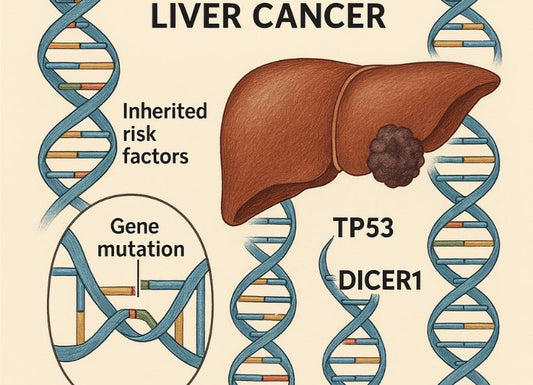What Causes UTIs? Most Common Causes & Bacteria
 Written By
Yusela Aquino
Written By
Yusela Aquino

The most common causes of UTIs involve bacterial infections, with E. coli bacteria being the culprit in the majority of cases. Urinary tract infections can occur at any time when bacteria, viruses, or fungi enter the urinary tract and begin reproducing inside the bladder or urethra. Due to their anatomy, women experience such infections more commonly, often regardless of any sexual contact, which is one of the primary ways to transmit infection. For a more detailed analysis, read below.
Urinary Tract Infections: Definition & Symptoms
A Urinary Tract Infection (UTI) occurs when a pathogen, most commonly bacteria, enters a person’s bladder and begins spreading inside the urinary system. While typically the infection can be fought with OTC medication, if the bacteria begin to take hold over other parts of the body, including the kidneys, UTIs can result in problematic complications requiring more aggressive treatment.
People who suffer from urinary tract infections report a variety of symptoms, which may differ depending on the causative pathogen. Signs of an ongoing infection may include:
- Constant need to urinate
- Discomfort when urinating (burning, itching, pain)
- Cloudy urine
- Dark or blood-tinted urine
- General pain in the pelvic or lower abdominal area
As the infection progresses and spreads to other parts of the urinary tract, you may experience general flu-like symptoms, including fever, body aches and pains, chills, or nausea. At that point, seeking prompt medical attention becomes much more important.
See Related: How to Protect Your Kidneys? Kidney Health Guide
What Can Trigger a UTI?
As explained, UTIs predominantly originate when a foreign pathogen enters the urinary system through the urethra. While there are many direct causes, a number of factors can be linked to an increased susceptibility to infection, and thus a higher risk of contracting specifically a UTI overall.
Bacterial, Fungal, and Viral Infections
As explained, infections of various kinds are the leading cause of UTIs. In the vast majority of cases, E. coli (Escherichia coli) bacteria are the primary culprit. It’s a common misconception, however, that other pathogens can’t infect the urinary tract. Other species of bacteria that can lead to a UTI are:
- Klebsiella
- Enterococcus
- Staphylococcus
- Pseudomonas
- Proteus
Other pathogens, though infrequently, can also contribute to UTIs. Typically, viral infections are caused by herpes simplex, while fungal infections can often be attributed to the candida family of yeasts.
Sexual Activity
During intercourse, a person’s sexual organs can come in contact with their partner’s genitalia, which can introduce UTI-causing pathogens into their urinary system.
Secondary Urinary Tract Problems
Certain conditions, such as kidney stones, can lead to blockages in the urinary tract and create an environment for bacteria to thrive, thereby facilitating a full-blown urinary tract infection.
Dehydration
Similarly to the previous case, not drinking enough fluids could trigger a reaction in the body to retain more water and reduce urination. Then, when the body instinctively “abstains” from flushing out toxins, this, again, creates a perfect environment for enhanced bacterial growth. Therefore, knowing how to test for dehydration is crucial in preventing this.
Poor Hygiene
Poor hygiene habits can introduce bacteria to the urethra, and contribute to UTI development. This is especially true in women because of their anatomy, which is why wiping from back to front after using the toilet should be avoided.
Auto-immune Disorders
Severe medical conditions, like cancer or HIV/AIDS, lower the effectiveness of the organism’s immune system, making patients more prone to many infections, including those of the urinary tract.
What Causes a UTI in a Woman?
Women are at a tremendously higher risk of contracting urinary tract infections than men are. According to research, it is estimated that “every other woman will have had at least one UTI during her lifetime.”
What causes UTIs in women, then? Several factors frequently contribute to infections; the most important one relates to female anatomy. A shorter urethra allows bacteria to reach the bladder – and cause havoc inside – more easily. Additionally, because the urethra is close to the anus, E. coli bacteria from the gastrointestinal tract also have a short route to travel to get into the urinary tract.
On top of anatomical reasons, which make proper hygiene so important for women, menopause can also contribute to UTIs. This results from lower estrogen levels post-menopause, thinning out the tissue lining the vagina and urethra. In turn, this can lead to dryness, irritation, and other changes in the microbiome, further increasing susceptibility to infections.
The Takeaway
Urinary tract infections belong to some of the most frequently reported medical conditions, with women being at a significantly higher risk than men. While some factors like anatomy or menopause cannot be controlled, to prevent UTIs, it’s significant to practice and promote good hygiene, maintain good levels of hydration, and seek medical attention when necessary.
Related Resources
- Recurring UTIs: Tests, Reasons & Treatment
- Urinalysis: What Indicates a Urinary Tract Infection (UTI)?
- Understanding White Blood Cells in Urine
References
Czajkowski K, Broś-Konopielko M, Teliga-Czajkowska J. Urinary tract infection in women. Prz Menopauzalny. 2021 Apr;20(1):40-47. doi: 10.5114/pm.2021.105382. Epub 2021 Apr 21. PMID: 33935619.

Yusela is a medical student with a degree in Biology and a strong foundation in health communication. With experience in both research and clinical settings, she writes clear, evidence-informed content to help patients and caregivers better understand liver health, chronic disease, and transplant care.



